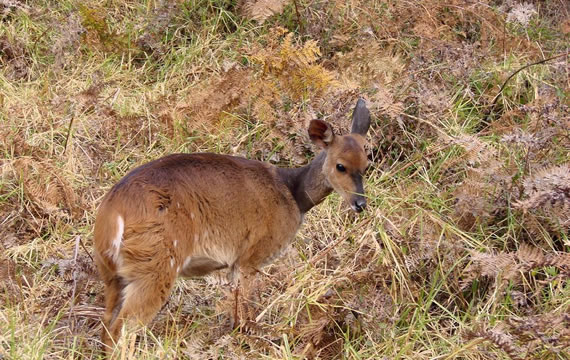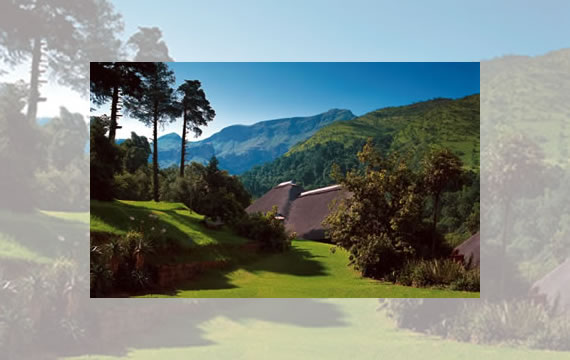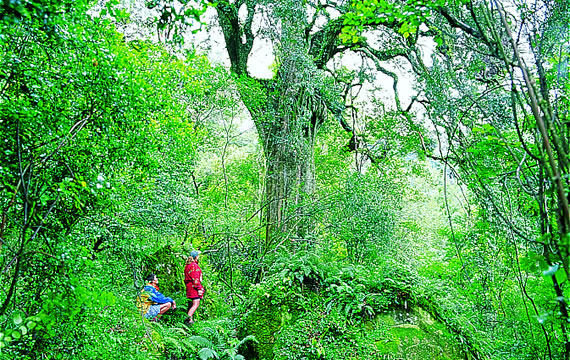GRADE: E
TIME: 2 hours round trip
DISTANCE: 3 km
TERRAIN: Undulating, with easy stream crossings.
The starting point is the car park behind the 70s block. There is an information board here with details of the trail, and many more information boards at points of particular interest along the way. Walk up the mowed slope, turning sharp right at the top, keeping the 70s on your right. Then down to the bottom of the mowed grass, picking up the path to the left. Cross the bridge into the Fern Forest, and then turn immediately left. The path leads all the way through the forest. Near the cairn in the middle of the forest look for the tallest tree in Fern Forest It is a Cape ash and is at least 200 years old. The species is common here, and many seedlings spring up in the hotel grounds. These are brought in by birds feeding on the large red berries of trees in the forest. Birds are not easily seen in the forest, but the cairn is a good place to sit and wait for them. The ‘best’ species are those that are endemic to South Africa – found only here; chorister robin-chat, Cape white-eye, bush blackcap, forest canary, Barratt’s warbler, southern boubou.
Further along the trail is the biggest cabbage tree in the Berg, and probably in all Africa. It is at least 150 years old. Branches form only after flowering, and this only happens in full sunshine. So when the tree was young, and making its first branches, this spot must have been the very edge of the forest, otherwise it would have been shaded. Forests expand and shrink naturally all the time. Close by, an elongated pit marks the spot where a large tree was felled over 100 years ago. No machinery was available so the tree had to be hand-sawn into boards on the spot. The pit was dug under the fallen trunk to allow a man to work at one end of a huge two-handled saw, while the other worker stood on top of the trunk. The sawing had to be precise, and was back-breakingly hard.
To find the rest of the information boards take the first path left going downhill. The path crosses a stream, re-enters the forest and leads to some half-shaded pools. This is a good spot to sit quietly and wait for three birds that are typical of clean flowing water: the Black Duck, Mountain Wagtail and Half-collared Kingfisher. A little further on is Putterill’s Weir. Cross the stream again here, and the path leads directly back to The Cavern.



